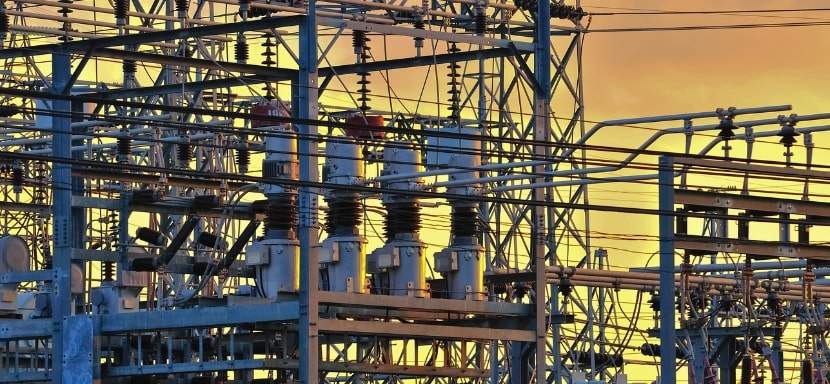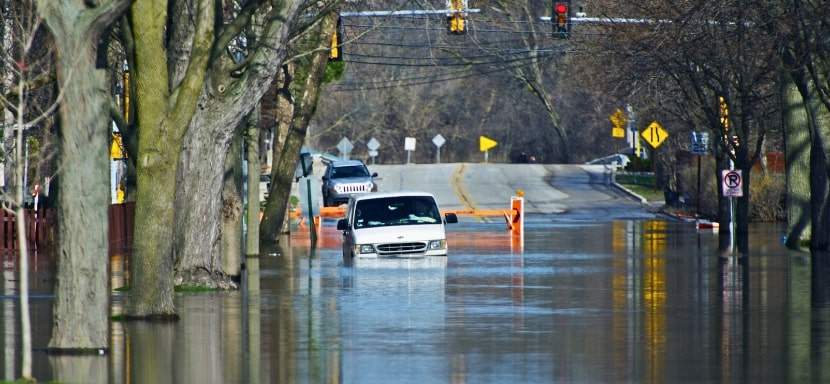How to Survive a Solar Flare

How to Survive a Solar Flare: Expert Tips & Precautions
The looming threat of solar flares, also known as solar storms, poses a significant risk to our technology-dependent society. Understanding how to survive a solar flare becomes crucial as the sun’s activity increases.
Solar flares, powerful bursts of radiation from the sun, can disrupt our planet’s magnetic field, leading to a series of challenges on Earth.
From communication blackouts to power grid failures, the impact of a solar flare can be far-reaching and devastating. Hence, knowing how to survive a solar flare is beneficial and essential today.
Key Points
- Protect Electronics: Surge protectors and Faraday cages shield devices from solar flare-induced power surges.
- Emergency Supplies: Stockpile essential items like food, water, and medical supplies for at least three days.
- Stay Informed: Sign up for solar activity alerts to receive timely warnings and prepare accordingly.
Understanding Solar Flares
Solar flares are sudden eruptions of intense high-energy radiation from the sun’s surface caused by the release of magnetic energy stored in the sun’s atmosphere.
The most severe solar flares, classified as X-class flares, can produce significant geomagnetic storms when directed towards Earth.
Solar Flare Classifications
- A-Class Flares: The weakest, causing minimal impact on Earth.
- B-Class Flares: Slightly stronger than A-class, with minor effects.
- C-Class Flares: These can cause brief radio blackouts and minor disruptions.
- M-Class Flares: Medium strength, capable of causing radio blackouts and minor radiation storms.
- X-Class Flares: The most powerful, leading to significant geomagnetic storms and severe disruptions.
Quick Tips for Preparing for and Responding to a Solar Flare
Get prepared and stay safe with these essential tips on what to do before and after a solar flare. These tips will ensure your well-being and the protection of your electronics.
Before a Solar Flare:
- Sign Up for Alerts: Receive timely warnings by subscribing to space weather alerts.
- Use Surge Protectors: Shield your electronics from potential power surges.
- Create a Faraday Cage: Protect sensitive devices from electromagnetic interference.
- Stock Emergency Supplies: Have enough food, water, and medical supplies for at least three days.
- Prepare a Communication Plan: Establish how to stay in touch with family and friends.
- Backup Power Sources: Invest in generators or solar-powered chargers for power outages.
- Stay Informed: Keep up with the latest solar activity through reliable sources.
- Secure Important Documents: Store essential papers in waterproof and fireproof containers.
- Protect Personal Safety: Plan to stay indoors during severe solar activity.
- Review Emergency Procedures: Ensure everyone in your household knows what to do.
After a Solar Flare:
- Check for Damage: Inspect electronics and infrastructure for any damage.
- Reconnect with Loved Ones: Ensure everyone is safe and accounted for.
- Stay Informed: Monitor updates from authorities about ongoing or residual effects.
- Conserve Power: Use backup power sources sparingly until regular power is restored.
- Report Issues: Contact local services to report any damage or power outages.
- Evaluate Supplies: Restock any used emergency supplies for future preparedness.
- Repair and Replace: Address any damaged electronics and infrastructure promptly.
- Update Emergency Plans: Review and improve your plans based on what worked and didn’t.
- Stay Indoors: Avoid going outside until it’s confirmed safe.
- Practice Self-care: Manage stress and anxiety by engaging in relaxing activities and maintaining a positive outlook.
The Science Behind Solar Flares
Solar flares occur in active regions around sunspots. They are often accompanied by coronal mass ejections (CMEs), massive bursts of solar wind, and magnetic fields rising above the solar corona. When these CMEs reach Earth, they interact with the planet’s magnetosphere, causing geomagnetic storms.
Potential Impacts of Solar Flares
The effects of solar flares on Earth can be profound. They can disrupt radio communications, GPS systems, and power grids. The most severe storms can potentially cause widespread power outages and damage to satellites and other critical infrastructure.
Historical Solar Flare Events
Historical events, such as the Carrington Event of 1859, highlight the destructive potential of solar flares. This massive geomagnetic storm caused widespread telegraph system failures and auroras visible at low latitudes. Understanding these past events helps us prepare for future occurrences.
How to Prepare and Stay Safe During a Solar Flare
Learn essential safety measures to protect yourself and your loved ones during a solar flare. From minimizing radiation exposure to securing your home and maintaining communication, these tips will help you navigate the challenges of a solar storm with confidence and preparedness.
Preparing for a Solar Flare
Preparation is vital to surviving a solar flare. This includes safeguarding electronics, securing power supplies, and ensuring communication plans. Here are detailed steps to prepare effectively.
Protecting Electronics and Communication Devices
Solar flares can induce electric currents in power lines, leading to voltage surges that damage electronics. Protecting these devices is crucial for maintaining communication and access to information during a solar storm.
Invest in Surge Protectors and Faraday Cages
Surge protectors can shield your electronics from power surges caused by solar flares. Faraday cages block electromagnetic fields and protect sensitive devices from intense solar radiation.
Backup Power Sources
Power outages are a common consequence of severe solar storms. Having reliable backup power sources, such as generators and solar-powered chargers, ensures you can maintain essential functions during a blackout.
Securing Essential Supplies
Preparing with essential supplies is critical for surviving a prolonged power outage or communication disruption. Stockpiling food, water, and medical supplies is a prudent measure.
Emergency Kits
Prepare an emergency kit that includes non-perishable food, bottled water, first-aid supplies, flashlights, batteries, and other essentials. This kit should sustain you and your family for at least three days.
Communication Plans
Developing a communication plan with family and friends ensures you stay connected even if traditional communication networks fail.
Battery-Powered Radios
Battery-powered radios can provide critical information and updates during a solar flare when other communication methods may be unavailable.
Staying Informed About Solar Activity
Keeping abreast of solar activity helps you anticipate and prepare for potential solar flares. Utilize reliable sources and technology to stay informed.
Solar Activity Alerts
Sign up for solar activity alerts from trusted sources like the Space Weather Prediction Center (SWPC) and NOAA. These alerts provide timely warnings about incoming solar storms, allowing you to proactively protect your electronics, secure your home, and ensure your safety.
Did You Know?
The most significant recorded solar flare, the Carrington Event, occurred in 1859 and was so powerful that it caused telegraph systems to spark and catch fire, and auroras were seen as far south as the Caribbean!
How to Stay Safe During a Solar Storm
Follow these key safety steps to protect yourself during a solar storm. From avoiding harmful radiation to keeping communication lines open, these tips will help you stay safe and prepared throughout the event.
Understanding Solar Flare Classifications
Solar flares are classified into A, B, C, M, and X classes based on intensity. A-class flares are the weakest, while X-class flares are the strongest and can cause significant disruptions. Knowing these classifications helps you assess the severity of an event and respond appropriately.
Personal Safety Measures
During a solar flare, prioritize your safety by staying indoors and limiting exposure to harmful radiation. Have a plan for power outages and communication disruptions to stay safe and connected with loved ones.
Minimizing Exposure to Radiation
Solar flares emit harmful UV and X-ray radiation. To minimize exposure, stay indoors during peak activity. If you must go outside, wear protective clothing and use high-SPF sunscreen—close curtains or blinds to block out some radiation and reduce risk.
Sheltering Indoors
Stay indoors during a solar flare to minimize radiation exposure. Choose areas away from windows and, if possible, stay in the lower levels of your home for added protection. Ensure you have essential supplies like water, food, and an emergency kit.
Protective Clothing and Sunscreen
Wear long-sleeved shirts, pants, and wide-brimmed hats to protect your skin if you must go outside during a solar flare. Apply high-SPF sunscreen to any exposed areas and reapply regularly to mitigate UV radiation effects.
Maintaining Mental and Emotional Well-being
Manage stress and anxiety during a solar flare by engaging in calming activities and maintaining a support system. Establish a routine that includes relaxation techniques and enjoyable hobbies to keep your mind at ease.
Staying Calm and Informed
Stay calm by following updates from reliable sources like SWPC and NOAA. Accurate information helps you understand the situation and avoid unnecessary panic, allowing you to respond effectively to developments.
Engaging in Calming Activities
Engage in activities that promote relaxation, such as reading, meditation, or spending time with loved ones. These activities help reduce anxiety and maintain a positive outlook during a solar flare.
After the Traffic Stop
It’s not just about moving on once the dust settles after a traffic stop. Reflecting on the encounter can provide valuable insights and help you better prepare for future interactions.
Here’s how to debrief yourself and use the experience constructively:
Review the Experience
Take a moment to think back on the stop. Assess how both you and the officer handled the situation. If something didn’t seem right—whether the stop seemed baseless or the officer’s conduct was questionable—you have the right to raise concerns. Consider filing a formal complaint with the police department’s internal affairs division if you believe there was misconduct.
Educate Yourself for the Future
Use this experience as a learning curve. Understanding what went well and what could have been handled better can empower you for future encounters. Familiarize yourself with your rights and local traffic laws; this knowledge is your best defense and a tool for navigating future stops confidently and safely.
Solar Storm FAQs
What is a solar flare?
A solar flare is a sudden eruption of intense high-energy radiation from the sun’s surface, often accompanied by coronal mass ejections (CMEs).
How can solar flares affect Earth?
Solar flares can disrupt radio communications, GPS systems, and power grids and cause auroras. Severe flares can lead to widespread power outages and damage to satellites.
How can I protect my electronics during a solar flare?
Use surge protectors and Faraday cages to shield electronics from power surges and electromagnetic fields caused by solar flares.
What should be included in an emergency kit for a solar flare?
An emergency kit should include non-perishable food, bottled water, first-aid supplies, flashlights, batteries, and other essentials to sustain you for at least three days.
How can I stay informed about solar activity?
Sign up for solar activity alerts from reputable sources like the Space Weather Prediction Center (SWPC) and stay informed about solar flare classifications.
What personal safety measures should I take during a solar flare?
Stay indoors, minimize exposure to radiation by avoiding windows, wear protective clothing, and apply high-SPF sunscreen if going outside.
Conclusion: Surviving Solar Flares
Surviving a solar flare requires a combination of preparedness, vigilance, and practical steps. By understanding the nature of solar flares and their potential impacts, taking measures to protect electronics, securing essential supplies, and maintaining personal safety and mental well-being, you can effectively navigate the challenges posed by these cosmic events. Staying informed and prepared ensures that you and your loved ones can weather any solar storm that comes your way.
10 Uncommon Facts About Solar Flares
Here are ten fascinating facts about solar flares, from their intensity classifications and impact on technology to historical events and the challenges of predicting these powerful solar phenomena.
- Decoy Vehicles: Some police departments use unmarked or decommissioned police vehicles as decoys along roadsides to deter speeding, even when no officers are present.
- Quota Debates: Despite popular belief, most U.S. states legally prohibit ticket quotas to evaluate police performance. However, the myth persists that officers must meet a certain number of tickets issued each month.
- Color Psychology: Research suggests that the color of your vehicle might influence your likelihood of being pulled over. Statistically, cars in bright colors like red or yellow are more likely to attract police attention than those in more subdued tones.
- Data Use: Police departments increasingly use advanced data analytics to predict where traffic violations are most likely to occur, optimizing the locations and times that officers should patrol.
- Pretext Stops: Law enforcement may use minor traffic violations as a pretext to stop a vehicle they suspect of more serious offenses, a practice that the Supreme Court has upheld as lawful under certain circumstances.
- License Plate Recognition: Beyond just checking for registration issues, automatic license plate recognition technology can alert officers to everything from parking tickets to more serious criminal warrants associated with a vehicle.
- Shift Variations: The likelihood of being stopped can depend on the time of day. Late-night drivers are statistically more likely to be pulled over due to the higher suspicion of impaired driving.
- Cultural Training: Officers often receive training on cultural and behavioral cues, which can influence how they interpret drivers’ actions during a stop and affect the encounter’s outcome.
More Doomsday Scenarios
How to Survive a Worldwide Communications Breakdown
Imagine waking up to silence. Your phone doesn’t buzz, your email won’t load, and even your local…
How to Survive a Worldwide Economic Collapse
When we hear “economic collapse,” it conjures images of chaos, scarcity, and instability. While the…
How to Survive a Robot Uprising
Robots: one minute they’re cleaning our homes or delivering pizza, and the next, they’re plotting…
How to Survive a Totalitarian Regime
In a world where governments control everything from curfews to thoughts, knowing how to…
How to Survive an EMP Attack
Imagine waking up to find your entire world plunged into darkness—no electricity, no functioning…
Recent Survival Posts
How to Survive a Layoff
Layoffs feel personal—even when they’re not. One day, you’re responding to Slack messages and forwarding…
How to Survive a Drug Test
I never imagined I’d be so emotionally invested in a paper cup. But there I was, standing under the fluorescent…
How to Survive an Interrogation
If you’ve ever been caught in the crosshairs of an overly enthusiastic mall cop or stared down by someone…
How to Survive a Nightclub Shooting
Nightclubs pulse with life—lights flashing, music pounding, bodies packed tight on the dance floor. It’s a place to…
How to Survive a Bachelor Party
A bachelor party is a delicate mix of celebration, chaos, and questionable decision-making, wrapped…
More Doomsday Survival Scenarios

How to Survive a Worldwide Economic Collapse
When we hear "economic collapse," it conjures images of chaos, scarcity, and instability. It is one of the doomsday scenarios that could happen in reality, and while the thought can be overwhelming, preparing for such a situation doesn't require an underground bunker...

How to Survive a Robot Uprising
Robots: one minute, they’re cleaning our homes or delivering pizza, and the next, they’re plotting global domination. How did we get here? Somewhere between asking Alexa for the weather and teaching AI to write poetry, we gave machines just enough intelligence to turn...

How to Survive a Totalitarian Regime
In a world where governments control everything from curfews to thoughts, knowing how to survive a totalitarian regime is crucial. History shows us that such regimes crush freedoms, spread fear, and twist truth into propaganda. But don't panic—if people survived in...

How to Survive an EMP Attack
Imagine waking up to find your entire world plunged into darkness—no electricity, functioning vehicles, or communication. This is the terrifying reality of an EMP (electromagnetic pulse) attack. It can strike without warning, and when it does, it affects more than...

How to Survive a Drone Attack
In today's world, the threat of drone attacks is increasingly becoming a reality. These unmanned aerial vehicles (UAVs) are used for surveillance, military operations, and commercial purposes. However, in the wrong hands, they can become tools of destruction....
More Survival Scenarios

How to Survive a Layoff
When the Floor Falls Out: The Reality of a Layoff Layoffs feel personal—even when they're not. One day, you're responding to Slack messages and forwarding emails. Next, you're staring at your monitor as it logs you out... for good. Whether it's a restructuring, a...

How to Survive a Drug Test
The Cup, The Room, The Truth I never imagined I’d be so emotionally invested in a paper cup. But there I was, standing under the fluorescent hum of a strip-mall clinic, trying to recall the last time I ate a poppy seed bagel. That’s the thing about drug tests—they...

How to Survive an Interrogation
If you've ever been caught in the crosshairs of an overly enthusiastic mall cop or stared down by someone in a uniform with a clipboard and a glare, you’ve felt it — the chilly fingers of interrogation anxiety. And while most of us imagine interrogation scenes as...

How to Survive a Nightclub Shooting
Nightclubs pulse with life—lights flashing, music pounding, bodies packed tight on the dance floor. It’s a place to escape, feel the rhythm, and lose yourself in the crowd. But that same energy can turn deadly in seconds, transforming a night of fun into one of the...

How to Survive a Bachelor Party
A bachelor party is a delicate mix of celebration, chaos, and questionable decision-making, wrapped in the noble intention of sending the groom off into married life with a night he’ll (hopefully) remember. It’s a ritual as old as time—well, as old as men deciding...

How to Survive Your First Time at the Gym
Walking into a gym for the first time can feel like stepping into an alien world. The machines hum with purpose, the regulars move confidently, and you’re left standing there, clutching your water bottle, wondering whether you’re in the right place—or on the right...

How to Survive a Worldwide Communications Breakdown
Imagine waking up to silence. Your phone doesn’t buzz, your email won’t load, and even your local radio station crackles with static. A worldwide communications breakdown has hit. What next? For many, this doomsday scenario may sound like the opening lines of a...

How to Survive a Flash Flood While Driving
Surviving a flash flood while driving requires quick thinking, calmness, and a solid plan to ensure your safety. Preparation can make all the difference between a close call and a catastrophe in emergencies like this. This guide provides practical advice to protect...

How to Build an Emergency Kit
Emergencies don’t knock politely at the door. They barge in, uninvited, like a distant relative with a penchant for drama, turning your world upside down without warning. Whether it’s a power outage, a natural disaster, or an unexpected evacuation, the key to staying...

How to Protect Yourself From Insects in the Wild
There’s nothing like being out in the wild—birdsong echoing through the trees, the fresh scent of earth, and a deep sense of peace that makes you think, “Ah, this is what life is about.” But then comes the buzzing. Mosquitoes, ticks, and flies swoop in like uninvited...
